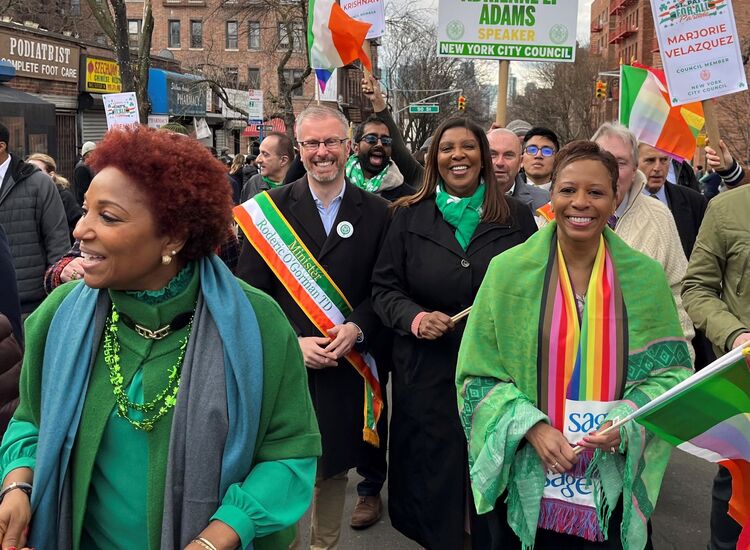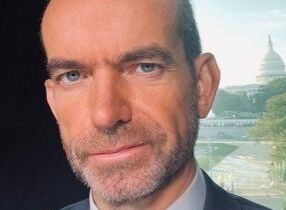Once in a while, a “Ceol” reader will ask what my musical life was like before I arrived in the N.Y./N.J. metro area in 1978. This subject came up just two Saturdays ago at the 50th birthday party for Irish traditional fiddler Brian Conway in White Plains, N.Y. Here, I’ll give you a peek.
My brothers Jim and Joe and I were each born four years apart in Philadelphia, and our formative musical tastes varied and sometimes clashed. Grand Funk Railroad and Dan Fogelberg for Jim, and Peter Frampton and Boston for Joe, never found their way onto my own turntable.
Jim used to say I brainwashed him, like some Manchurian candidate, with Motown, Stax, and other soul and rhythm-and-blues, making him a musical outlander among his college buddies who feasted on heavy metal or hard rock. Today his knowledge of and relish for R&B and soul surpass my own, and he ribs me about how much I’ve forgotten or spottily recall as we sit and listen to a sampling of the more than 14,000 music tracks he’s systematically put on a computer connected to his home speakers. I’m pleased to note he has a significant amount of Irish traditional music in his collection. I suppose it’s another instance of my brainwashing him, and he’s now generously leading me back into R&B and soul. We’re having fun.
In Philadelphia, I spent my salad days in listening and dancing to music. Guys learned to dance in order to meet girls who wanted to dance, which was every girl we encountered. Socially, you danced or died. “The 81,” “Wagner Walk,” “Bristol Stomp,” and other Philly line dances, along with slow dances of hip-swaying, neck-hanging intimacy, were the order of the day at Wagner’s Ballroom and the Concord Roller-Skating Rink.
Also, I and the guys I played basketball with would head off to an asphalt game (no blood, no foul) in a ragged-red Dodge Dart in which we’d sing our fool heads off to the Temptations’ “My Girl,” Soul Survivors’ “Expressway to Your Heart,” Dells’ “There Is,” Martha and the Vandellas’ “Dancing in the Street,” and, in especially loud, defiant voices, Edwin Starr’s “War.”
No form of amnesia could ever eradicate our military draft lottery numbers. Mine was 131. Nor can I ever forget the friend with the single-digit lottery number whose name is inscribed on the Wall in Washington, D.C.
In my senior year at La Salle College, I became the social director of my fraternity, Sigma Phi Lambda, and its deejay for what became jam-packed parties at a nearby VFW hall. I spun vinyl 45’s and LP tracks on two turntables plugged into a keyboardist’s amp with two large speakers. I learned how to keep a crowd out on the dance floor just shy of turning them into puddles of sweat.
But amid all the R&B, soul, Motown, Stax, and TSOP (The Sound of Philadelphia) sprinkled with rock (Rolling Stones, Cream, Jefferson Airplane, Spencer Davis Group, Steppenwolf, Mott the Hoople, Free, Nazz, and David Bowie) that I played, the high point of every Sig Phi party was “Rosalita (Come Out Tonight)” from Bruce Springsteen’s 1973 album, “The Wild, the Innocent, and the E Street Shuffle.” The crowd became manic on the chorus: “Rosalita, jump a little lighter / Senorita, come sit by my fire / I just want to be your love, ain’t no lie / Rosalita, you’re my stone desire.”
Even now, longtime Springsteen fans know the litmus test for credibility is “Rosalita,” and the sax playing of the E Street Band’s Big Man, Clarence Clemons, fueled the delirium on the dance floor back then. In Philadelphia, where Frank Rizzo was mayor and race relations were retrograde, the brawny, black Clarence Clemons and the scrawny, white Bruce Springsteen represented a bond of brotherhood everyone in my fraternity recognized. Those two and the rest of the E Street Band made music about working class life: mind-numbing job, callous boss, scarce cash, and a car that’s “a dud … stuck in the mud somewhere in the swamps of Jersey,” all finding relief in the street and in arcade-scented romance down the shore.
One of the very few musical acts my brothers and I unhesitatingly agree on seeing together is Bruce Springsteen and the E Street Band.
My younger brother Jim and his future wife, Karen, saw them perform for three and a half hours straight at the 4,000-seat Cambria County War Memorial Arena in Johnstown, Pa., on April 12, 1976. Jim told me it is still the best concert he’s ever seen.
My youngest brother Joe took me twice to see the band at the 17,000-seat Spectrum in Philadelphia. The first time, we precariously stood all concert long on folding chairs ten rows in front of the stage. The second time, we were in the nosebleed seats stage right. Each occasion was memorable.
I took Joe to the 19,000-seat Madison Square Garden in New York City, where we had optimal seats for the second night of the ten-concert stand by the band during June-July 2000. I remember the boos filtering down for “American Skin (41 Shots),” and the cheers and boisterous “uh-uh-uh-uh-oh” from the audience after the first line in the chorus of “Out in the Street.”
Years later, Jim, Joe, and I saw the band at Giants Stadium, where we had pigeon-perch, upper-back-deck seats that couldn’t crimp our enthusiasm for singing our fool heads off to “Thunder Road.” How can you not sing along to these lines: “So you’re scared and you’re thinking / That maybe we ain’t that young anymore / Show a little faith, there’s magic in the night”?
Intimations of mortality inevitably follow the death of a musician so integral to what you were and what you are. Organist Danny Federici was the first E Street Band member to die, on April 17, 2008, from melanoma at age 58. The Big Man himself, saxophonist Clarence Clemons, seemingly indestructible, died on June 18, 2011, from complications of a stroke at age 69. That’s right: 69, five years beyond what Paul McCartney and John Lennon contemplated in the lines “Will you still need me / Will you still feed me / When I’m sixty-four?”
Clarence Clemons was not a saxophone virtuoso. No one will confuse him with Sonny Rollins, Wayne Shorter, or Joe Lovano. But Clarence was an indispensable part of the E Street Band sound, injecting it with reedy sinew as a reminder of Springsteen’s song wellsprings in R&B, soul, and funk. Clarence was a presence of unmistakable impact.
My own memory of him is unchanged from that night at Madison Square Garden 11 summers ago. It includes his plangent sax solo at the onset of “The River” and his playing in the band’s 16-minute performance of “Tenth Avenue Freeze-Out.” Springsteen turned the latter into a revival meeting, and during it he introduced every E Street Band member by name - except one.
“I’m talking about the minister of soul, the secretary of the brotherhood, the next senator from the state of New York,” Springsteen shouted. “Do I have to say his name? Do I have to say his name? Say who?” He repeated that last question nine more times before sliding into the lyric about his saxophonist: “When the change was made uptown / And the Big Man joined the band / From the coastline to the city / All the little pretties raise their hands / I’m gonna sit back right easy and laugh / When Scooter and the Big Man bust this city in half.”
On stage, Clarence Clemons and Bruce Springsteen raised their hands and clasped them, black on white, white on black, and danced. “Say it!” Springsteen giddily urged the crowd over and over again. Then he uttered the statement the faithful already knew but still wanted to hear: “the heart-stopping, earth-shaking, earth-quaking, heart-breaking, air conditioner-shaking, history-making, legendary E Street Band.” It was their first U.S. tour in a decade. They were reunited -- finally.
Pasted outside Madison Square Garden were official tour posters showing silhouettes of Springsteen on guitar and Clemons on saxophone, predicting to everyone who entered and proving to everyone who left that there’s magic in the night.
What does this have to do with Irish traditional music? Most Irish traditional instrumental music is meant for dancing, and I danced to much of the music I listened to previously. I could ask for no better preparation. I’m hooked on both.









